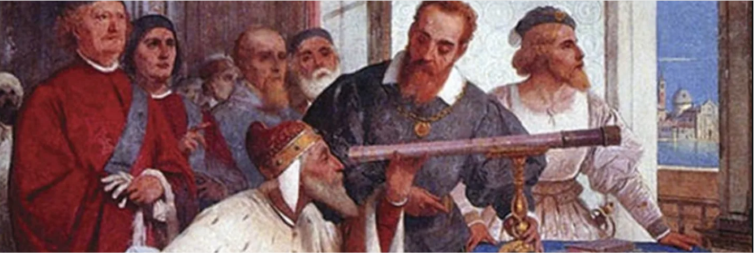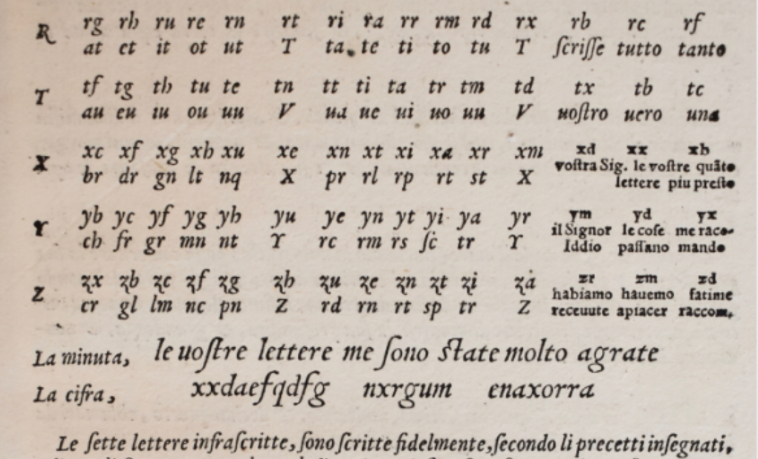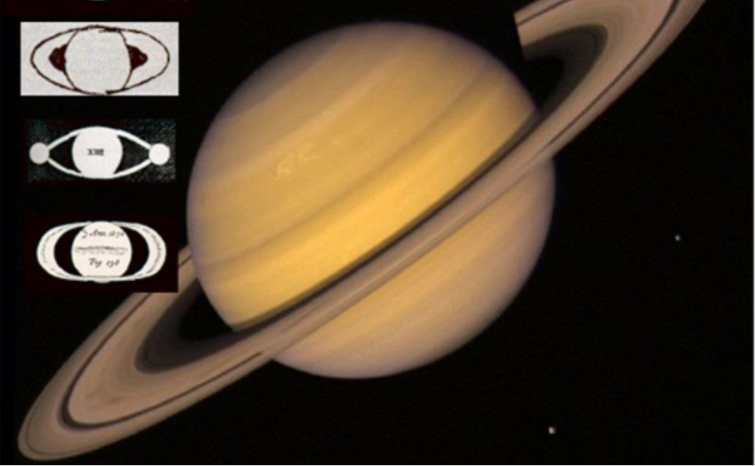Planets and all about their confusing rings
 Giuseppe Bertini, Public domain, via Wikimedia Commons
Giuseppe Bertini, Public domain, via Wikimedia Commons
As soon as he built himself a telescope, Galileo Galileo set to work and discovered unprecedented wonders in the sky, first the hills and valleys on the Moon, and then the four satellites of Jupiter. After that, in 1610, he saw an even more unusual picture gazing through his binoculars.
Galileo observed Saturn and determined that it was not, as he had expected, an ordinary round planet, but of a very unusual shape. He immediately composed an anagram about it. It was on July 16, 1610.
Anagrams were a thing back in the day
And not long after, on November 13, 1610, when he found out that Emperor Rudolf was interested in the anagram, so Galileo revealed its full form: Altissimum planetam tergeminum observavi which means “I saw the highest planet tripled”. What exactly did he mean with that?
He wrote to a friend that he saw “the most extraordinary miracle” that the planet Saturn is not one body but is made up of three bodies that almost touch each other, and that the middle one is about three times larger than the lateral ones!
It is worth mentioning that astronomers and other scientists used to publish their discoveries in the form of complicated anagrams. It was a way to, as we would say today, protect their copyright.

Telescopes at that time had quite modest capabilities and Saturn really looked mysterious and to almost every observer it appeared a little different.
Additional confusion arose when it was determined that Saturn was slowly changing its appearance. In 1612, Galileo saw a perfectly round Saturn. A little later Hevel calculated that the shape of Saturn changes in a period of 15 years and that during that time it goes through six main phases.
But no one knew exactly what caused the strange appearance of the planet!
Huygens to the rescue
The mystery was solved by Huygens. It was 1655, but Huygens also wrote down his discovery in the form of an anagram and it took three years until he deciphered it: Annulo cingitur tenui, piano, nusquam coherente, ad eclipticam incline, which means: “It is surrounded by a ring, thin, flat, nowhere joined, inclined towards the ecliptic.”
Apart from this, Huygens also explained how the appearance of Saturn, i.e. its ring, changes and even predicted that in 1671 the ring would be invisible. And the ring can be invisible in two cases: when the Moon is in its plane and then it is not visible because it is too thin, and then in the case when the Sun comes in its plane and illuminates it from the side.
There were those who disputed Huygens’ discovery, some saying that it was just an optical illusion.
And in 1975, Jean Cassini noticed that the ring was divided by a thin line in the middle into two parts, and that the inner part was slightly brighter.

For a long time, it was believed that only Saturn has a ring. Today, however, we know that Jupiter, Uranus and Neptune also have their own rings.
However, only Saturn’s rings can be seen from our planet through a telescope. The rings are made of many pieces of ice, rocks and dust. Saturn’s rings contain the most ice pieces that reflect the Sun’s light well.
The other mentioned planets have mostly dust in their rings, which is again dark and reflects light poorly. In addition, their rings are much thinner, which is also the reason why we cannot see them from Earth.
Did you know?
Our magnificent planet Earth also has its own ring, but it is made of various debris originating from old artificial satellites and propulsion rockets.
The rings have very little effect on the planets themselves. Although they are large in size compared to the mass of the parent planets, they are almost nothing. They only represent a good reservoir for future shooting stars, i.e. meteors.
Want to read more about the universe? Visit our blog!

